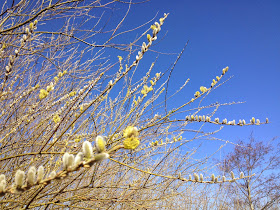This morning I've got a headache after I saw the local farmer spraying his Canola fields which are in full bloom! I still have a headache as I write this and I think its a migraine because I feel like puking too.
I stopped him and talked to him telling him that I have bees in this locality and that regulations state that all spraying is to take place after 21h when bees are in the hives and not in the morning hours when bees are already in the field. He said this maybe the case in Sweden but in Denmark its legal to spray this pesticide-fungicide mix in the morning because it is marked as "bee-friendly". He is not an organic farmer so bee-friendly is questionable!
He also reacted insulted for me even bringing this up because he isn't doing anything illegal yet I sound as if this was wrong Rolling Eyes Sad
I suggested that he maybe sprays in the future in the evening but he refused because he has lots to do and he can't possibly spray all his fields in the evening hours. So we parted without saying good buy to each other.
I will contact the minister for the environment Monday and see what the story is with regulations and what they can do to protect our native and honeybees from such issues.
I placed "trays" infront of my hives to see if bees are acting poisoned today, so far I can' see any strange behaviour, but this means nothing because this food they bring in in form of pollen and necatr will be fed to brood which might get infections or be weak to deal with Varroa virus.
By the way he didnt want to say what pesticide he was using hejust said its a mix of insecticide and fungicide and its marked as bee friendly
If I discover dead bees infront of the hive I will send them for testing.
























.JPG)
.JPG)
.JPG)
.JPG)
.JPG)
.JPG)
.JPG)
.JPG)
.JPG)
.JPG)
.JPG)
.JPG)
.JPG)
.JPG)
.JPG)
.JPG)
.JPG)
.JPG)
.JPG)
.JPG)
.JPG)
.JPG)
.JPG)
.JPG)
.JPG)
.JPG)
.JPG)
.JPG)
.JPG)
.JPG)
.JPG)
.JPG)